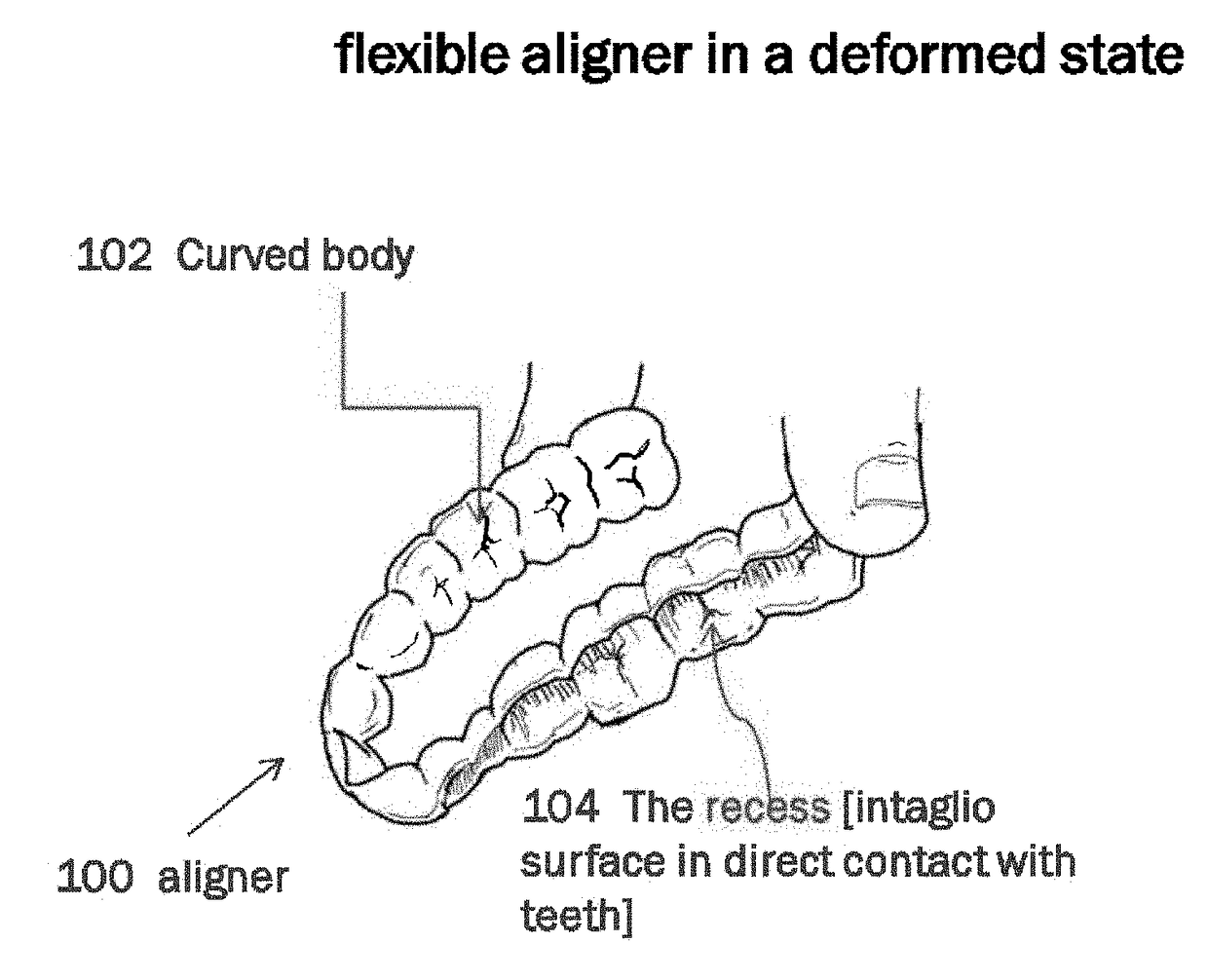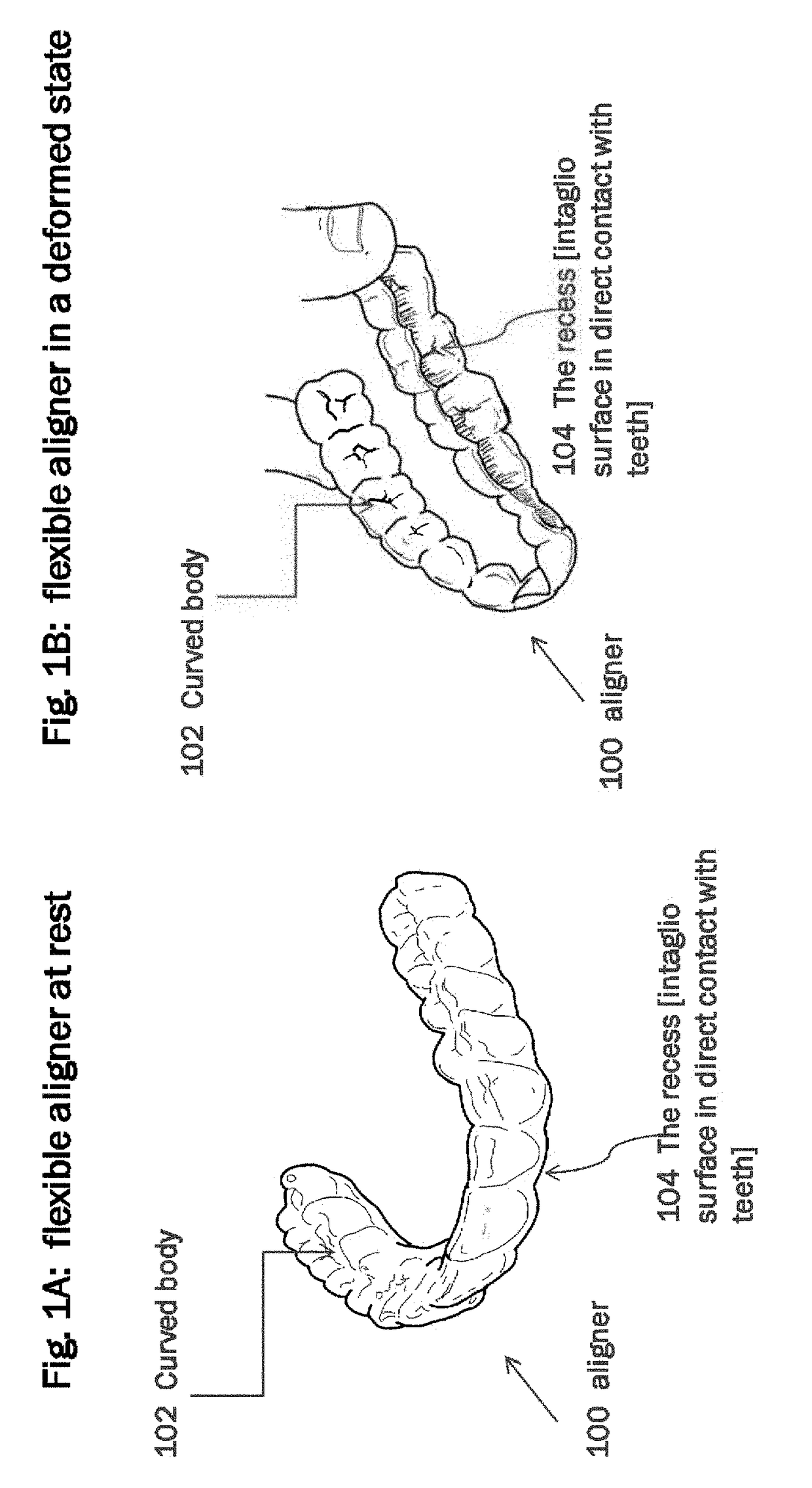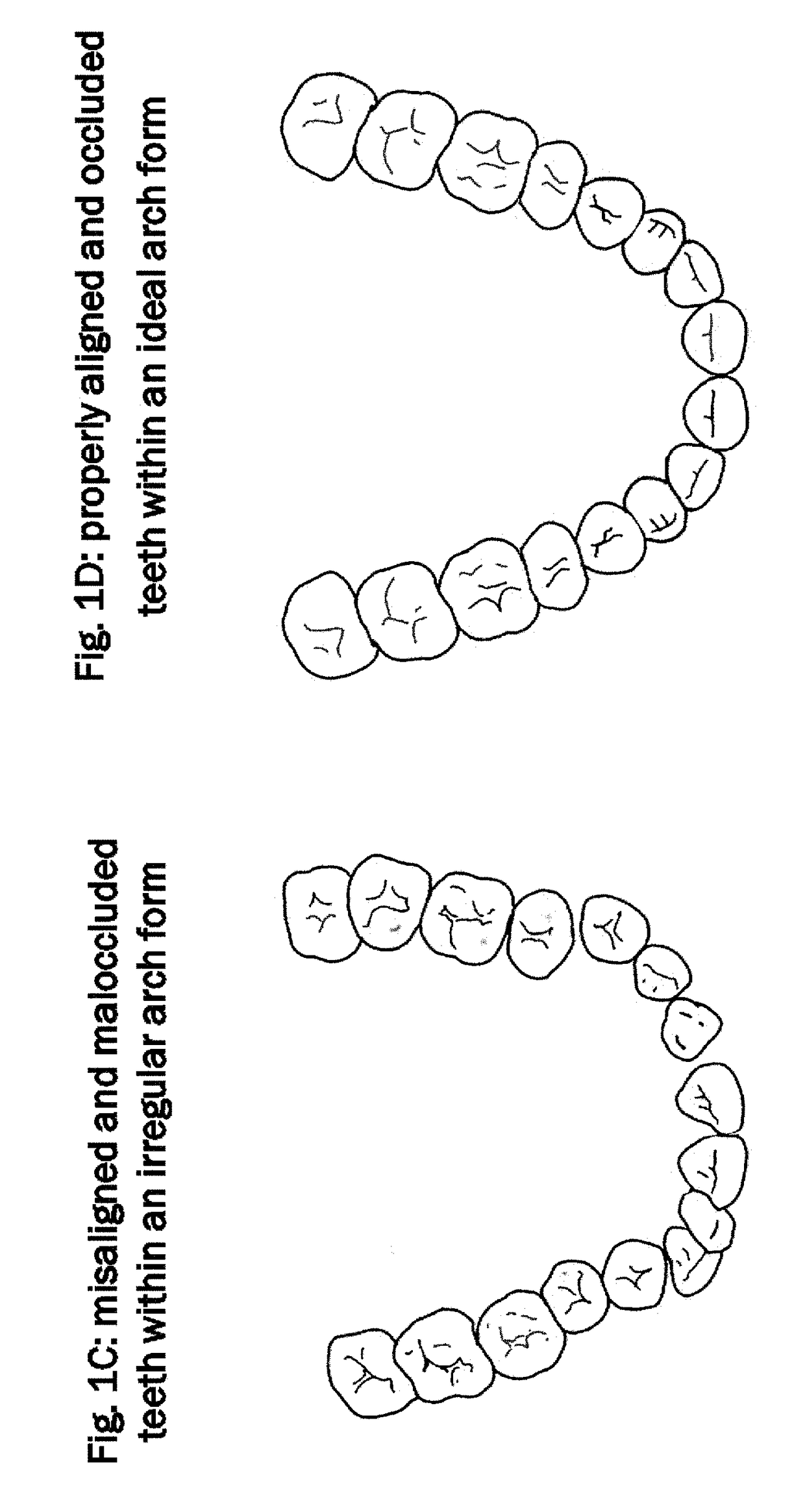Combination orthodontic and periodontal; orthodontic and implant; and orthodontic and temperomandibular joint dysfunction and orthodontic orthognathic treatment
a combination of orthodontic and periodontal technology, applied in the field of combination orthodontic and periodontal, can solve the problems of many clinicians being afraid, orthodontic treatment having a negative effect on the health of the periodontium, and little evidence that malocclusion adversely affects the periodontium, etc., to achieve the effect of improving the health of the patient, and reducing the risk of infection
- Summary
- Abstract
- Description
- Claims
- Application Information
AI Technical Summary
Benefits of technology
Problems solved by technology
Method used
Image
Examples
examples
[0404]The following are typical examples of patients who have received treatment according to the present invention. For illustration purposes, FIG. 1C shows a set of misaligned teeth. FIG. 1D shows a set of teeth that are properly aligned along an ideal arch.
First Patient
Age: 26 Sex: Female
Medical History: Non-contributory
[0405]Brushing: 2 times each day
[0406]Flossing: sporadic
Dental Caries: none
Dental History: see below
Orthodontic Treatment History:
Therapy initiated—age 12
Duration—4 years
[0407]Palate expander (˜2 years)[0408]Headgear (˜6 months)[0409]Traditional orthodontic (brackets / wires / elastics) therapy (˜1 year)[0410]Retainers: none provided by the orthodontist[0411]Relapse became evident: 1-2 years after bracket debonding. Became progressively worse over subsequent decade.
Periodontal Treatment History:[0412]Gingival grafting (epithelial and connective tissue) surgery at age 23 in the mandibular anterior region[0413]Transient sensitivity, especially present durin...
PUM
 Login to View More
Login to View More Abstract
Description
Claims
Application Information
 Login to View More
Login to View More - R&D
- Intellectual Property
- Life Sciences
- Materials
- Tech Scout
- Unparalleled Data Quality
- Higher Quality Content
- 60% Fewer Hallucinations
Browse by: Latest US Patents, China's latest patents, Technical Efficacy Thesaurus, Application Domain, Technology Topic, Popular Technical Reports.
© 2025 PatSnap. All rights reserved.Legal|Privacy policy|Modern Slavery Act Transparency Statement|Sitemap|About US| Contact US: help@patsnap.com



